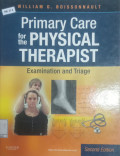
Primary Care for the Physical Therapist examination and Triage {BW Fisioterapi}
Section Two, Chapters 6 to 15-Examination/Evaluation-Focuses on the Physical therapist's examination and triage skills vital to a primary care environment. Central to these skills is the data evalu…
- Edisi
- Edisi kedua
- ISBN/ISSN
- 978-1-4160-6105-2
- Deskripsi Fisik
- xiv, 418 halaman : ilustrasi ; 25 cm.
- Judul Seri
- Care Therapits
- No. Panggil
- 615.82 BOI p

Fisioterapi praktik klinis
This book is designed for physiotherapy practitioners as well as students studying in this field. The book provides a systematic approach to the assessment, diagnosis and treatment of various clini…
- Edisi
- Edisi Kedua
- ISBN/ISSN
- 978-979-044-700-4
- Deskripsi Fisik
- XX, 710 halaman : ilustrasi ; 24 cm.
- Judul Seri
- -
- No. Panggil
- 615.82 DRE f

Professionalism in psysical therapy (BW Fisioterapi)
Professional duty is the commitment to meeting one's obligations to provide effective physical therapy services to individual patients/clients, to serve the profession, and to positively influence …
- Edisi
- -
- ISBN/ISSN
- 978-1-4160-0314-4
- Deskripsi Fisik
- 223 halaman : 23 cm
- Judul Seri
- -
- No. Panggil
- 615.8 SWI p
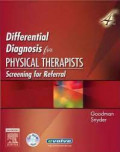
Differential diagnosis for physical therapist : screening for referral
The goal of the physical therapy examination, including differential diagnosis, is to efficiently classify the patient for treatment or to direct patients to the proper healthcare provider, thereby…
- Edisi
- Fourth Edition
- ISBN/ISSN
- 978-07216-0619-4
- Deskripsi Fisik
- vii, 911 halaman : 28 cm
- Judul Seri
- -
- No. Panggil
- 615.82 GOO d

Diagnostic imaging for physical therapists {BW Fisioterapi}
This book is the culmination of Jim's experience and expertise in teaching radiology to students and clinicians throughout the United States. This book is an introduction to medical imaging and dem…
- Edisi
- -
- ISBN/ISSN
- 978-1-4160-2903-
- Deskripsi Fisik
- xi, 320 hal; 24 cm.
- Judul Seri
- -
- No. Panggil
- 615.8 SWA d

Enabling relationships in health and social care: a guide for therapists {BW …
This book supports therapists in constructing open and non-hierarchical relationships for shred decesion making,effective working partnerships and mutual empowerment. I working towards this, the au…
- Edisi
- -
- ISBN/ISSN
- 0-7506-5274-8
- Deskripsi Fisik
- xii, 212 hal; 23 cm.
- Judul Seri
- -
- No. Panggil
- 615.8 SWA e

Research methods for clinical therapists
Clinical therapy is a dynamic field that necessitates continuous evaluation and integration of new research findings to enhance therapeutic practices. This abstract provides a comprehensive overvie…
- Edisi
- Fifth Edition
- ISBN/ISSN
- 978-0-7020-2998-1C
- Deskripsi Fisik
- 19X25 cm, 406 hal;
- Judul Seri
- -
- No. Panggil
- 615.8 HIC r
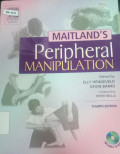
Maitland's peripheral manipulation {BW Fisioterapi}
The Maitland Concept,' as it has come to be know, appears to be contradictory, exchibiting both the qualities of stability andd flexibility. The clinical basis and the concept's fundamental element…
- Edisi
- Fourth Edition
- ISBN/ISSN
- 978-0-7506-5598-9
- Deskripsi Fisik
- xiii,636 hal; 25 cm.
- Judul Seri
- -
- No. Panggil
- 615.8 MAI

Hypermobility syndrome: recognition and management for physiotherapists
People who are endowed with increased ranges of joint movement are said to be hyermobile. It is becoming clear that hypermobility is more than the curiosity it was once considered to be. Thee is a …
- Edisi
- -
- ISBN/ISSN
- 978-0-7506-5390-9
- Deskripsi Fisik
- ix, 176 hal; 24 cm.
- Judul Seri
- -
- No. Panggil
- 615.8 KEE h
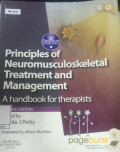
Principles of neuromusculoskeletal treatment and management a handbook for th…
A Number of years ago,it was planed to merge this book with companion text entitled Neuromusculoskeletal Examinitation and Assessment. Feed-back from users indicated it would be better to keep them…
- Edisi
- -
- ISBN/ISSN
- 978-0-443-06799-0
- Deskripsi Fisik
- xi, 314 hal; 25 cm.
- Judul Seri
- -
- No. Panggil
- 615.8 PRI



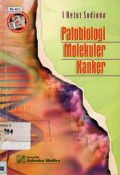
 Karya Umum
Karya Umum  Filsafat
Filsafat  Agama
Agama  Ilmu-ilmu Sosial
Ilmu-ilmu Sosial  Bahasa
Bahasa  Ilmu-ilmu Murni
Ilmu-ilmu Murni  Ilmu-ilmu Terapan
Ilmu-ilmu Terapan  Kesenian, Hiburan, dan Olahraga
Kesenian, Hiburan, dan Olahraga  Kesusastraan
Kesusastraan  Geografi dan Sejarah
Geografi dan Sejarah